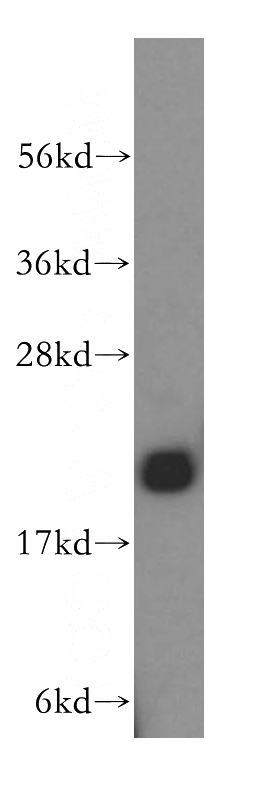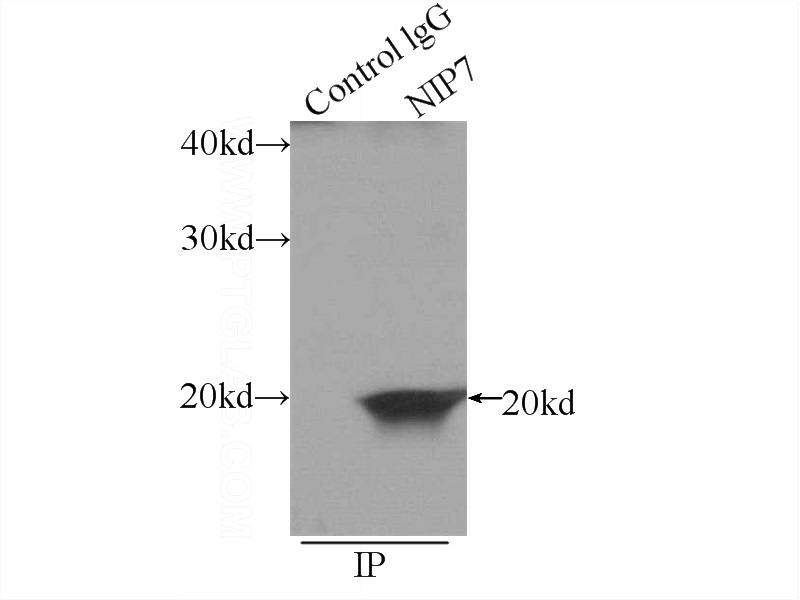-
Product Name
NIP7 antibody
- Documents
-
Description
NIP7 Rabbit Polyclonal antibody. Positive WB detected in mouse liver tissue, HeLa cells, HepG2 cells. Positive IP detected in mouse liver tissue. Observed molecular weight by Western-blot: 20,15kd
-
Tested applications
ELISA, WB, IP
-
Species reactivity
Human,Mouse,Rat; other species not tested.
-
Alternative names
CGI 37 antibody; FLJ10296 antibody; HSPC031 antibody; HSPC180 antibody; KD93 antibody; NIP7 antibody; OK/SW cl.76 antibody; OK/SW cl.78 antibody
-
Isotype
Rabbit IgG
-
Preparation
This antibody was obtained by immunization of NIP7 recombinant protein (Accession Number: NM_016101). Purification method: Antigen affinity purified.
-
Clonality
Polyclonal
-
Formulation
PBS with 0.02% sodium azide and 50% glycerol pH 7.3.
-
Storage instructions
Store at -20℃. DO NOT ALIQUOT
-
Applications
Recommended Dilution:
WB: 1:500-1:5000
IP: 1:200-1:2000
-
Validations

mouse liver tissue were subjected to SDS PAGE followed by western blot with Catalog No:113187(NIP7 antibody) at dilution of 1:500

IP Result of anti-NIP7 (IP:Catalog No:113187, 3ug; Detection:Catalog No:113187 1:500) with mouse liver tissue lysate 4000ug.
-
Background
Nip7 was initially identified in yeast as required for processing of the 27S pre-rRNA to form the mature 25S and 5.8S rRNAs (PMID: 9891085). It localizes to the nucleolus but was also found to sediment in the region of free 60S subunits in sucrose density gradients (PMID: 9891085). Experimental evidence suggests that the P. abyssi Nip7 may be an exosome regulatory factor. It binds preferentially to U- and AU-rich RNAs and strongly inhibits the exosome due to its association with both the exosome complex and the substrate RNA.
Related Products / Services
Please note: All products are "FOR RESEARCH USE ONLY AND ARE NOT INTENDED FOR DIAGNOSTIC OR THERAPEUTIC USE"
